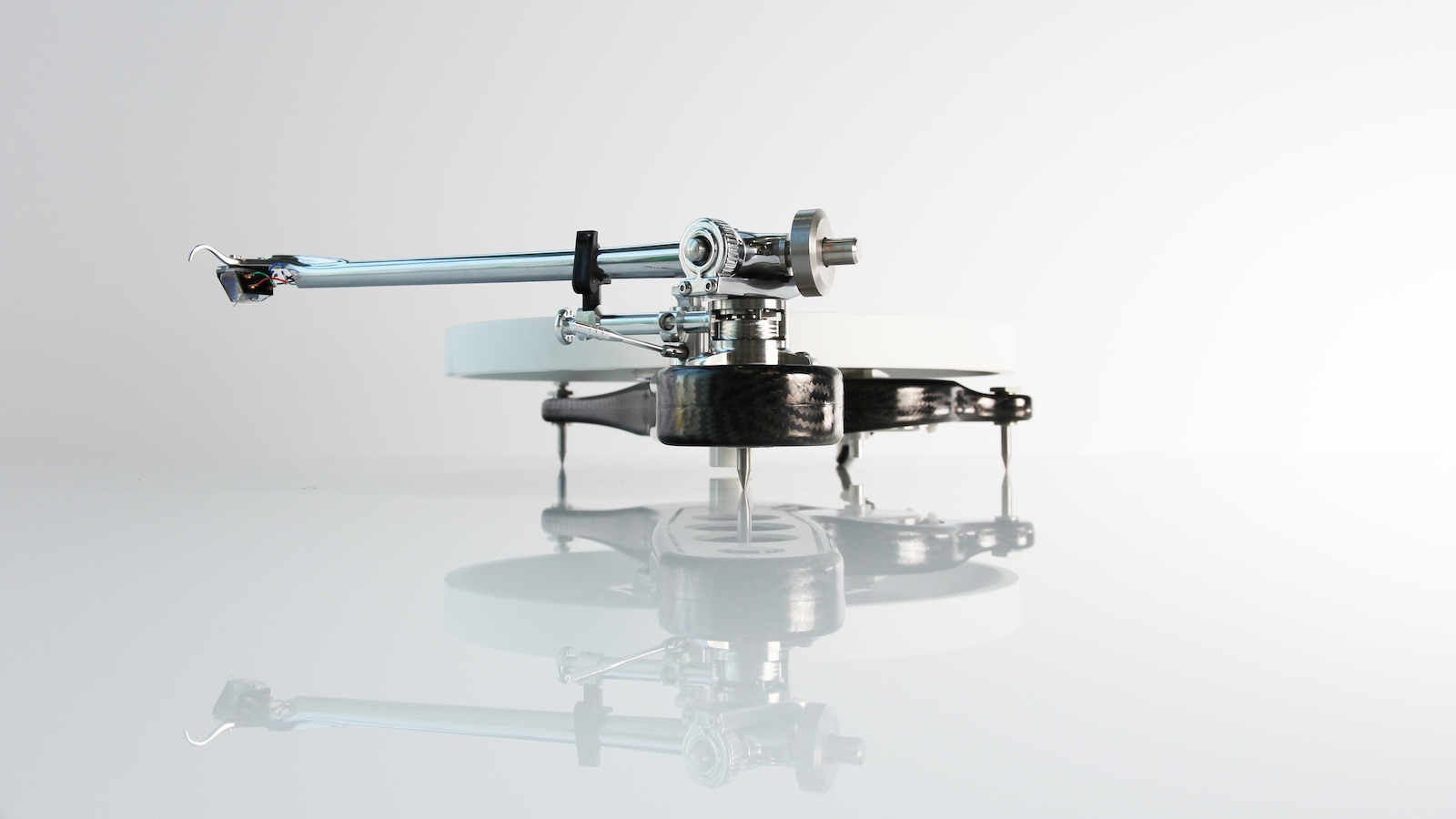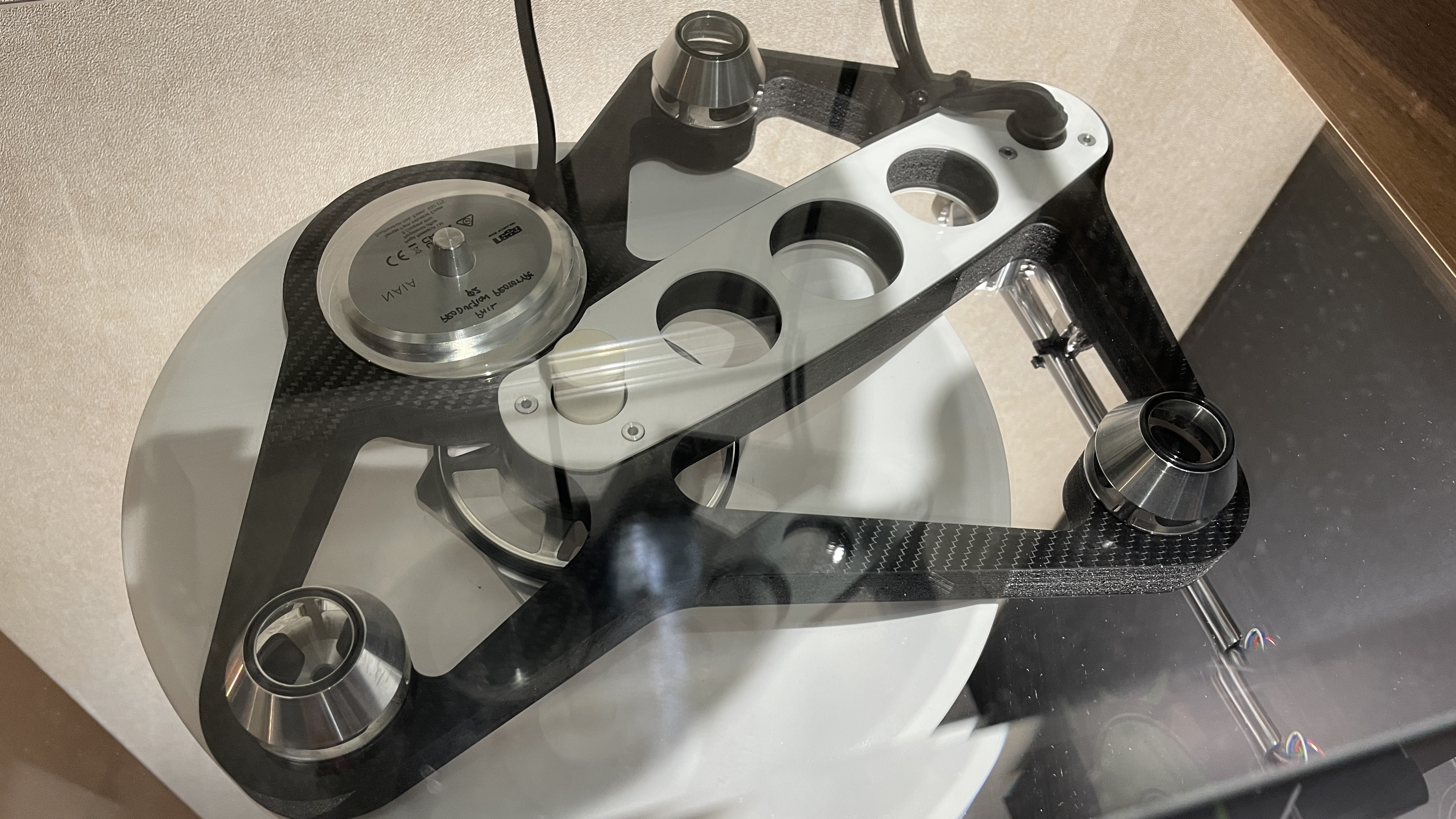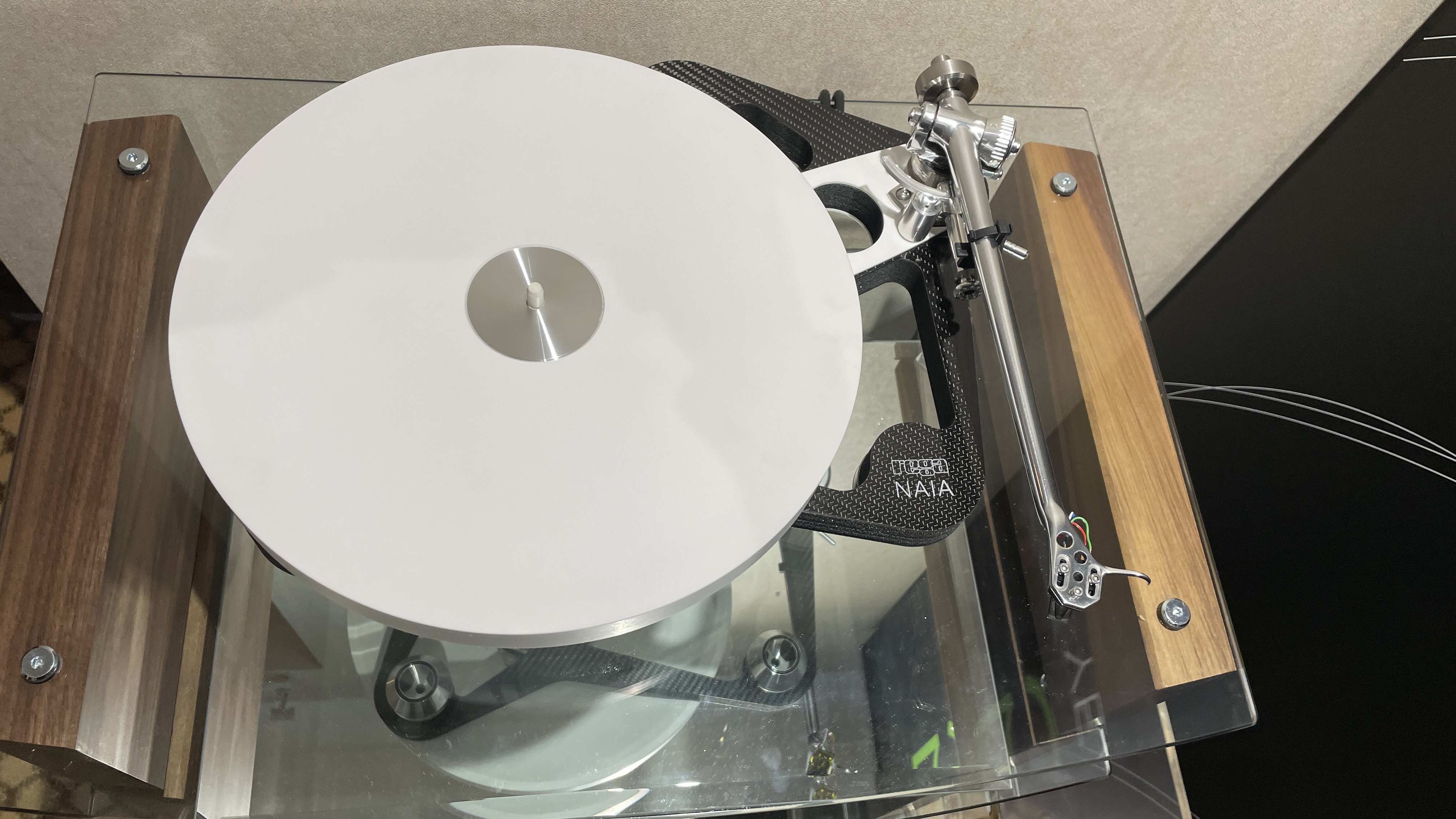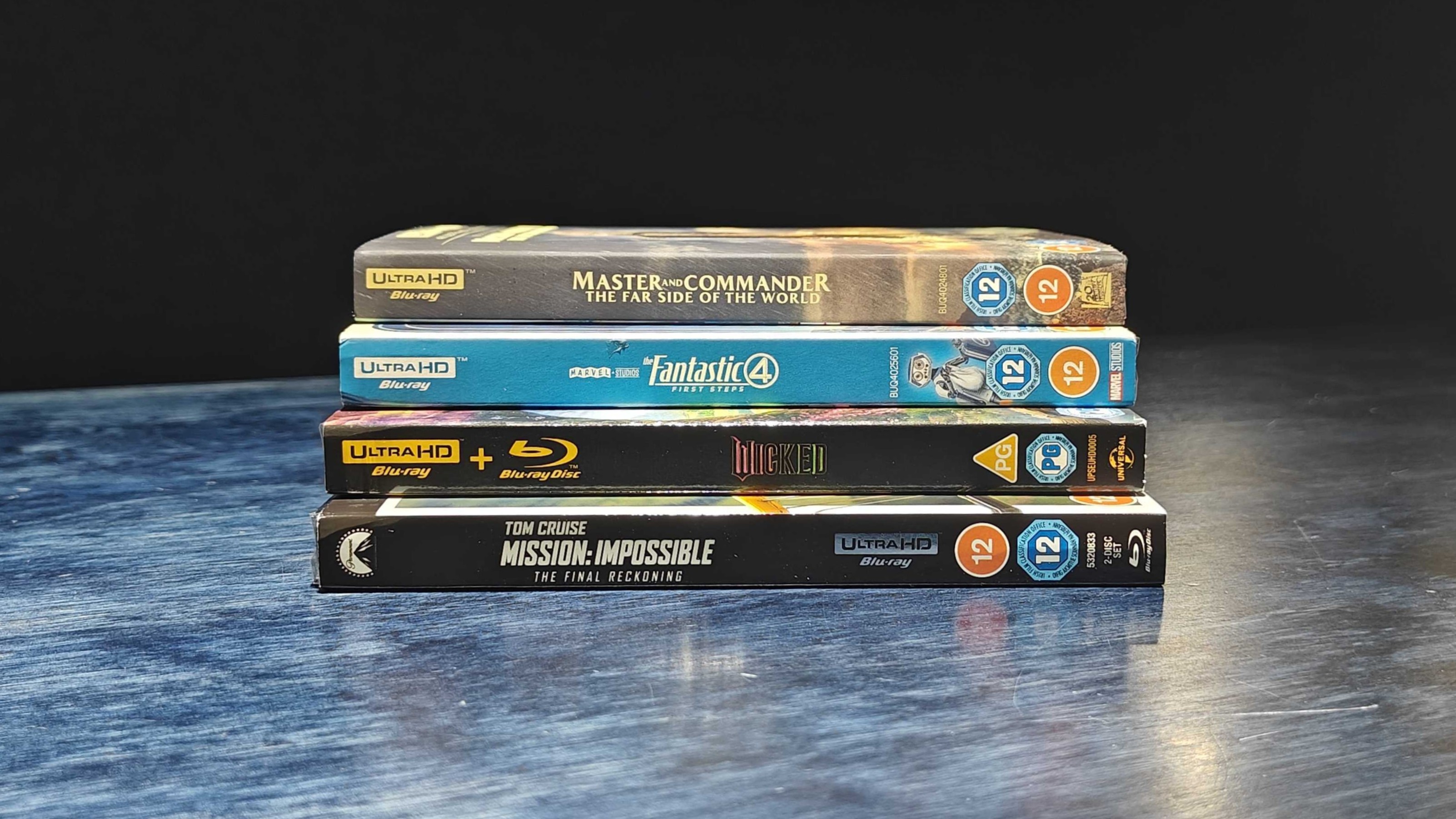Rega Naiad to Naia: how a no-expense-spared R&D turntable became a £12k reality
14 years ago, Rega began an ambitious engineering exercise...

“It's one of the products that maybe the whole company is happiest with for many, many years,” Rega’s co-founder and owner Roy Gandy says of the Naia turntable, which the company previewed at the Bristol Hi-Fi Show in February ahead of its targeted release later this year. That’s quite the statement given the success of the numerous amplifiers and turntables the company has released in recent times, but it makes sense when you consider the 14-year journey that has led Rega to this release. The Naia is, after all, a production version and performance-equalling evolution of a dizzyingly ambitious, no-expense-spared, limited-edition turntable that, like many of life’s wonderful things – velcro, penicillin, viagra, The Rolling Stones – came about as a rather happy accident.
Naiad beginnings
In 2009, the Naiad began as purely a research and development engineering exercise; a proving ground to show how Rega's ideas on low mass and high rigidity were the correct approach to turntables. “All of our ideas were almost contrary to every other turntable manufacturer,” Gandy tells us. “We had a lot of belief as engineers that they were valid, but as they were contrary to everyone else in our industry, we had to do something to give us the confidence that what we were thinking was correct.” The goal was to create the ultimate turntable – just the one – and so Rega threw all rules and restrictions out of the window, somewhat at odds with its approach to all other products. “It was a big step for us because our philosophy is based on value,” Gandy says. “When we design something, one of the first questions is ‘how much is it going to cost?’ With this, we couldn't do that. We had to make a huge philosophical change within ourselves to achieve it.”
And so, there were zero cost restrictions for this no-compromise deck. Only the best materials and engineering solutions were chosen and, as it was never intended to reach production, there was also little consideration for manufacturing practicalities.
Gandy says that when developing a new product, it typically makes sense to change one thing at a time in order to improve it – but as a turntable is an ideal compromise, using materials and processes that are appropriate for the price point, you can upset the balance if you change one thing. He likens it to a Formula 1 car: “Change one little tiny bit and it can upset the whole car because everything is working in a perfect symbiosis situation.” So the company realised that if it was going to take a significant step up from the Planar 3, or the Planar 9 it was working on at that time, everything needed to be changed; everything needed to be new.
“We had to say, ‘What is the absolute best material? What's the best process? What's the best shape? What's feasible in the UK? What are the cutting-edge industries?’ We started off having to make a huge philosophical change within ourselves to achieve it.”
Gandy explains that most of the parts came out of favours from cutting-edge manufacturing companies. The Naiad’s bearing, for example, was produced by a company manufacturing for the Ministry of Defence who found itself with a bit of spare time to dedicate to the project when the MOD had reduced defence budgets. It didn’t have any data on machining aluminium oxide and so decided it would be beneficial for the company to gain experience in producing something to that kind of accuracy – accuracy which, if you were wondering, was plus or minus one micron in machining the hardest material known to man! Eighteen months later, hey presto, one bearing. And a gigantic bill for Rega?

“It's probably cost us in the region of about half a mill to a million pounds in time, energy and machinery,” Gandy recalls the company telling him. “But don't worry, we've learned a huge amount from it – it's enabled us to start making parts for other people where we can make larger profits. We'll invoice you for £1000 pounds.” And that happened in pretty much every part.
The latest hi-fi, home cinema and tech news, reviews, buying advice and deals, direct to your inbox.
To give one more example, the chassis was made by a company that made steering wheels and gearbox cases for the Formula 1 industry, it too having suddenly found itself with time to take on such a project due to Formula 1 having capped its budgets back then. “The company had a junior engineer that loved vinyl,” says Gandy. “So when we were begging and pleading, they told him, ‘Oh go on, go away and do what Rega wants.’ He worked with us for about eighteen months to produce the plinth, and it was wonderful. It was not like talking to hi-fi people; he understood everything that we were talking about immediately. It took us five minutes to explain the concepts, and it was a lovely collaborative process.” And at the end of it? A couple of cutting-edge plinths.
So Rega had all these separate parts, but they were very difficult to machine and fit together. With plenty of determination and, by the sounds of it, even more diamond grinding (“people were rubbing away with diamond file for weeks!” says Gandy), one turntable was produced – the best record player Rega could make – five years after the project had begun. Job done? Not quite.
Not a one-off for long
Gandy said that the end result was “so startling” that it did indeed give Rega the confidence it had sought back in 2009. And funnily enough, the first thing the company made after that wasn't a high-price turntable; it was the [entry-level] Planar 1! “It allowed us to feel confident that everything we were doing was in the right direction,” he concluded.
But that is purely a tangent in the Naiad story. Indeed, the turntable wasn’t a ‘one-off’ for long.
As noted in Rega's A Vibration Measuring Machine book, Tony McCombie of GT Audio (Rega’s French distributor) happened to be visiting the factory during one of the listening sessions. He found himself taking part and expressed an interest in the testbed turntable. “It’s so good, I know I could sell five,” he said, despite Gandy telling him that it could cost in the region of a quarter million!
Rega was bowled over by that interest, and it sowed the seeds for the company to try to make more units. It was originally going to be ten, but to make the carbon fibre plinths (the most expensive single component Rega had ever produced) a minimum order of 50 was required. Rega actually changed supplier for the Naiad plinth. Gandy explains: “We found another company that was again willing to improve their processes on the back of our product, do their development work at their costs to help us, so we ended up with 50 bits over a five-year period.”
Meanwhile, the company that had made the bearing had improved its manufacturing process and was able to make more – it took five years to do so (and again, it charged Rega £1000 for each!)

So, as suppliers replicated parts and techniques were developed to manufacture them in greater numbers, the marginal costs came down. Word was spreading too, with demand starting to build and with advanced orders coming in.
That’s how the Naiad unintentionally became an actual turntable available to purchase, albeit a limited edition one. It costs £30,000 and nearly 40 units have been ordered and sold, to date. So yes, there's still time to bag one…
Each Naiad has been painstakingly handmade and assembled by just three of Rega’s highly skilled craftsmen, including CEO Phil Freeman, a watch/clockmaker by trade who had the skill to put all of the parts together.
The chassis exudes minimalist elegance, with its stressed skin construction around the Rohacell core that stands on three steel feet. Its black carbon finish gives the appearance of a snakeskin ‘winklepicker’ shoe, as Rega says.
Twin aluminium oxide braces above and below connect the diamond-machined zirconium main bearing with the base of the precision-built tonearm, which uses titanium bearing assembly.
On the main bearing sits an alloy subplatter, the lower half carrying the triple drive belt linked to the spindle, which is driven by a 24v, low-vibration motor fixed beneath the chassis. The motor sits in an enclosure entirely made of mu-metal, a nickel-iron alloy developed in the early 1920s for undersea telegraph cables and noted for its high magnetic permeability.
The top half of the platter comprises a three-point form that carries the white aluminium oxide platter, upon which sits a white wool mat.

Naiad to Naia
As you will have presumed by now, everything about the Naiad’s manufacture screams ‘limited edition’, right down to the fact that Freeman primarily coordinates Rega’s strategies and so doesn’t have the time to painstakingly assemble such an involved turntable! But rather than that be the end of the Naiad, Rega has found a way to design a production-ready Naiad – the Naia.
By the way, the name Naiad was chosen as a tribute to Rega co-founder Roy Gandy’s mother, who originally inspired his love of music. Recalling her playing the piano when he was a child, he named it after her favourite piano piece. The name itself refers to the water nymphs said to inhabit rivers, springs or waterfalls in classic Greek mythology. Considering the sentimentality behind this naming and the close heredity between the two turntables, it’s little wonder Naia has been chosen.
The Naia wasn’t exactly as much of a happy accident, then, but its outcome still wasn’t in line with Rega’s original intention, which had been to bridge the performance and price gap between the Planar 10 and Naiad. “We had intended to bridge the gap but we’ve now not done that,” says Gandy. “It [the Naia] is a Naiad turntable in production form: the performance of the new Naia equals the performance of the Naiad. So we're very, very happy.”
The Naia is due for release sometime in the second half of this year (though Gandy says it would have been ready to launch now had Rega been able to get the ceramic parts sooner), and has to a large extent been practically possible due to advances in processes since the Naiad was set in motion.

Gandy says that Rega found two German companies that can machine hard ceramics using CNC, rather than just hand machining, and that the cost of that ceramic (ZTA zirconium-toughened alumina, to be precise) bearing has come down to a few hundred pounds – things which have made a huge difference. Rega has designed a whole new structure for the skeletal all-carbon fibre plinth, which is now infused with Graphene for added stiffness. The Tancast 8 foam core (used in Planar 10, Planar 8 and Planar 6) is used in the plinth too. “It’s cutting edge,” says Gandy, “and not validated by anyone else.”
The RB titanium tonearm is new, using Rega’s one-piece polished aluminium arm tube. And a triple-drive belt system and a ceramic platter that has an improved flywheel effect have been chosen for their high stability and drive characteristics. The Naia comes with the same separate AC power supply unit as the Planar 10, too.
“All of these processes – which are nothing to do with hi-fi; they’re all engineering processes,” Gandy continues, “have allowed us to make a production version of the Naiad that can be assembled by the production team that makes Planar 8s and Planar 10s.”
Indeed, before the Naia, many of the Naiad's design and engineering concepts had been used in the Planar 10 (2019, £4499) and Planar 8 (2018, £2199) decks. Up until now, the Planar 10 has been the closest the company has come to a production version of the Naiad. We called it “quite some engineering statement… unarguably the most sonically capable turntable we’ve heard at this price” in our five-star review. Unfortunately, we've never heard the Naiad. But given Rega's track record and the stellar performance of subsequent Rega turntables that contain the Naiad’s DNA, it's fair to assume it – and consequently the Naia – sounds pretty special. We can’t wait to take the Naia for a spin.
The Rega Naia will be available with (£12,000) or without (£9200) the company's reference Aphelion 2 moving coil cartridge (£3465 sold separately) when it goes on sale later this year.
MORE:
16 of the best Rega products of all time: turntables, amps and phono stages
Rega turns 50: Rega talks digitising amplifiers and what's next
Missed British Hi-Fi Week? Catch up with our news, reviews and features

Becky is a hi-fi, AV and technology journalist, formerly the Managing Editor at What Hi-Fi? and Editor of Australian Hi-Fi and Audio Esoterica magazines. With over twelve years of journalism experience in the hi-fi industry, she has reviewed all manner of audio gear, from budget amplifiers to high-end speakers, and particularly specialises in headphones and head-fi devices.
In her spare time, Becky can often be found running, watching Liverpool FC and horror movies, and hunting for gluten-free cake.
